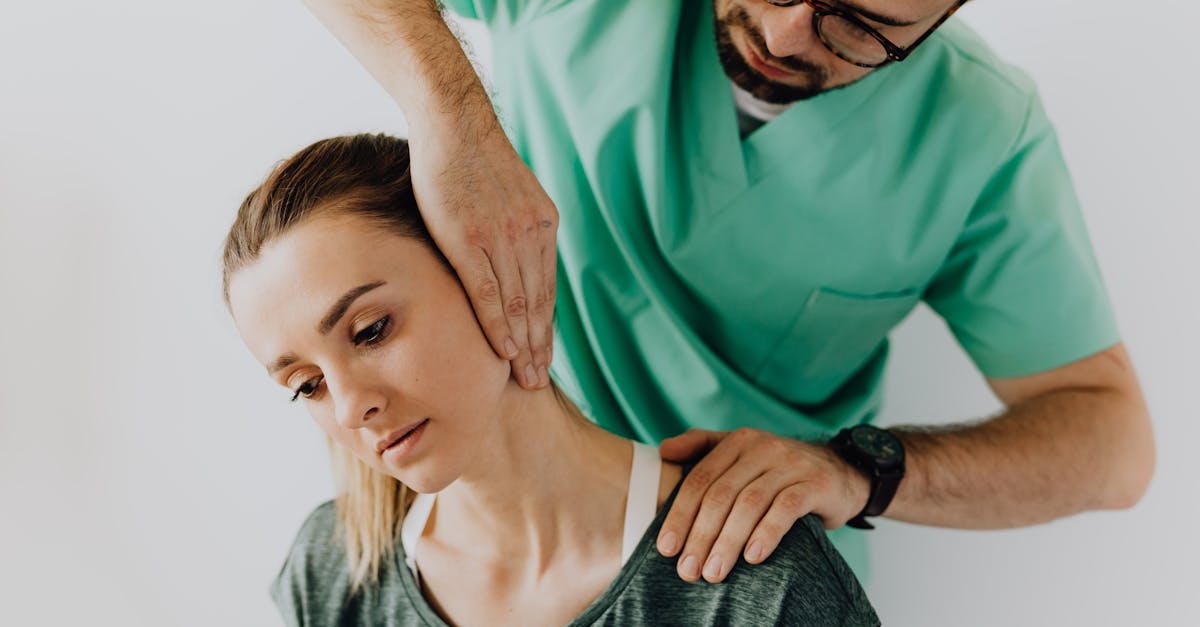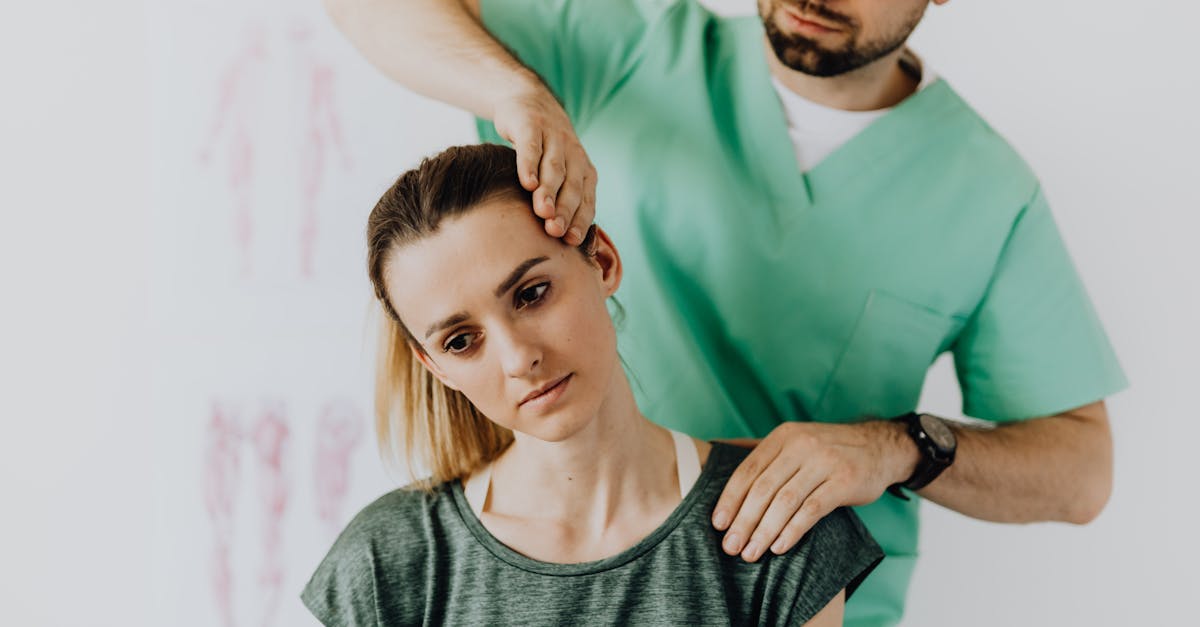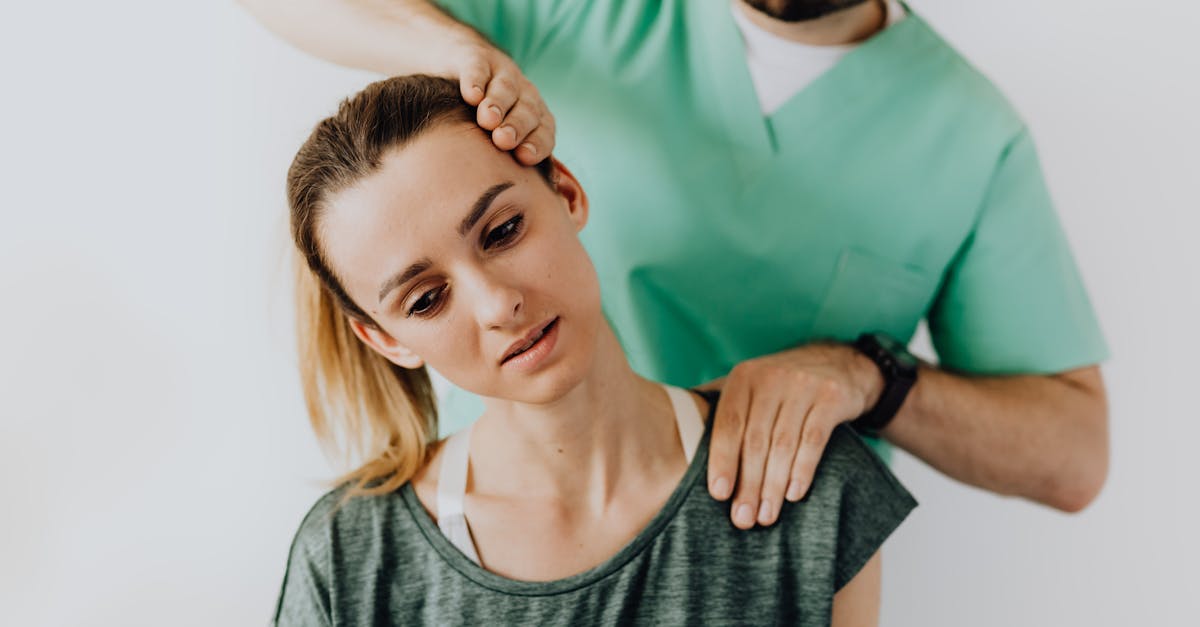|
In Short, ideal sleep positions for neck pain relief involve aligning the head and neck correctly to ease discomfort and promote better sleep quality. This practice helps reduce conditions like cervical pain and stiffness. By understanding how to optimize your sleeping posture, you can significantly enhance your overall comfort and well-being. Combining these techniques with the holistic approach at Pulse Align Clinics paves the way for natural healing and improved posture through gentle stimulation and support. Experience the benefits of a restful night’s sleep while reclaiming your mobility and vitality. |
Understanding ideal sleep positions is crucial for those struggling with neck pain. Sleeping on your side or back, while maintaining proper alignment with suitable pillows, can significantly enhance comfort and promote healing. Techniques such as using cervical pillows, modifying pillow height, and incorporating gentle stretching can further alleviate tension. Combining these practices with the innovative methods offered by Pulse Align supports a holistic approach to well-being, enabling individuals to reclaim their mobility and enjoy restful sleep.

Discover Balance and Well-Being with Pulse Align
At Pulse Align, we believe that restoring your body’s natural balance should be a gentle and intuitive process. Our innovative, non-invasive approach uses gentle stimulation to help recalibrate muscle tone symmetry and enhance overall posture. By promoting these natural processes, many individuals find themselves experiencing a newfound sense of comfort and well-being.
The Gentle Approach to Wellness
Our focus at Pulse Align is not directly on discomfort, but on encouraging the body to recalibrate itself naturally. This holistic method can often help clients find their way to improved posture and a greater sense of balance. By emphasizing muscle tone symmetry, clients frequently report enhancements in their overall comfort, contributing to an improved quality of life.
Personalized Wellness Journey
What sets Pulse Align apart is our commitment to a personalized approach. Many clients have shared their experiences about how our gentle techniques have led to noticeable improvements in overall wellness. They mention newfound ease in movement and a greater sense of postural balance. Testimonials often indicate that integrating our services into their wellness journey has transformed how they feel daily.
Explore Pulse Align’s Services Today
If you are ready to embark on your wellness journey with Pulse Align, we invite you to visit our website to learn more. With convenient locations in La Prairie, Mont-Royal, Terrebonne, and beyond, booking a consultation has never been easier. Remember, our services work alongside your healthcare support, enhancing your wellness journey. Explore how our gentle, family-friendly approach can benefit you and your loved ones by visiting Our Clinics.
Take the first step towards reclaiming your balance—schedule an appointment online and discover the Pulse Align difference today!
Medical Disclaimer
The information provided on this site is for educational purposes only. Pulse Align complements but does not replace medical care. Clients should always remain under the supervision of their healthcare team.
- Side Sleeping: Maintains head and neck alignment, reduces strain
- Back Sleeping: Supports neutral neck position with proper pillow
- Avoid Stomach Sleeping: Prevents neck twisting and discomfort
- Use Cervical Pillows: Provides optimal neck support and alignment
- Adjust Pillow Height: Ensures correct head and neck elevation
- Incorporate Gentle Stretches: Eases tension before sleep
- Create an Ergonomic Sleep Environment: Supports a restful night’s sleep

Finding the right sleep positions is essential for alleviating neck pain and enhancing overall comfort. This article explores effective sleep positions that promote proper alignment of the head and neck, reducing discomfort and facilitating a peaceful night’s rest. Incorporating the principles of Pulse Align, individuals can maximize the benefits of their sleep habits to support neuromuscular health and restore natural balance.
Understanding the Importance of Sleep Position
Sleep position significantly influences the health of your neck and spine. Discomfort resulting from poor alignment can lead to various issues, including stiffness and pain radiating to other parts of the body. Optimal sleep positions not only reduce neck strain experienced during sleep but also enhance the overall quality of your rest. By prioritizing ergonomic sleeping habits, individuals can promote quicker recovery and improve daily functionality.
1. Side Sleeping
One of the most recommended sleep positions for alleviating neck pain is side sleeping. This position supports spinal alignment when the head stays level with the spine. To achieve optimal support, choose a medium-height pillow that keeps your head aligned with your body’s natural curve. Avoid using excessively high or low pillows that can lead to misalignment and increased tension in the neck. If neck pain persists, integrating specialized neck pain exercises during the day can further enhance comfort.
2. Back Sleeping
Another favorable position for managing neck pain is back sleeping. In this position, weight is distributed evenly across the spine, which can help alleviate pressure on the neck. Using a cervical pillow that supports the natural curve of the neck plays a crucial role in maintaining a neutral position. For added comfort, consider placing a pillow under your knees to flatten the back, ensuring a more relaxing environment for your neck muscles.
3. Avoid Stomach Sleeping
Unlike back and side sleeping, stomach sleeping should be avoided, as it often leads to unnatural twisting of the neck and increased strain. This position can contribute to heightened discomfort in the cervical region. To discourage this habit, consider using strategically placed pillows around your body, which encourage you to remain on your side or back throughout the night.
Choosing the Right Pillow and Mattress
Selecting the correct pillows and mattress can significantly impact your neck health while sleeping. Opt for cervical or memory foam pillows that provide optimal support and alignment for your head and neck. A medium-firm mattress can also enhance comfort and keep your spine properly aligned during sleep. Make regular assessments of your bedding, as worn-out mattresses or pillows may hinder your overall sleep quality, further exacerbating neck pain.
Incorporating Additional Strategies
To enhance the benefits of improved sleep positions, consider incorporating heat therapy and gentle stretching exercises into your bedtime routine. Applying warmth to the neck area aids in relaxing muscles, while stretches help release tension and ensure a restful night’s sleep. Establishing a calming sleep hygiene routine, including mindfulness practices, can also aid in reducing stress and preparing your body for better rest.
Adopting these sleep positions and strategies can lead to noticeable improvements in managing neck pain while aligning with the holistic principles of Pulse Align. When combined with their innovative approaches to neuromuscular health, individuals can reclaim comfort, improve posture, and enhance their overall well-being.
| Sleep Position | Benefits |
|---|---|
| Side Sleeping | Promotes alignment of head and neck, reducing strain. |
| Back Sleeping | Maintains neutral posture, distributing weight evenly. |
| Avoid Stomach Sleeping | Prevents unnatural twists in the neck, alleviating stress. |
| Supportive Pillows | Utilizes memory foam for optimal neck positioning. |
| Mattress Quality | Ensures firm support for restful sleep. |
| Pillow Height Modification | Allows proper head and neck alignment. |
| Heat Therapy | Facilitates muscle relaxation before sleep. |
| Gentle Stretching | Incorporates routines to enhance flexibility. |
| Regular Movement | Encourages active lifestyle to prevent stiffness. |
| Stress Management Techniques | Promotes overall wellness through mindfulness practices. |

Client Testimonials: Enhancing Wellness Through Optimal Sleep Positions
Many clients at Pulse Align have shared their transformative experiences in addressing neck pain through the use of optimal sleep positions. These testimonials emphasize how the unique approach of Pulse Align not only alleviates discomfort but also supports the body’s natural ability to recalibrate and restore balance.
One client from La Prairie reported, “After learning about the best sleep positions for my neck pain, I started feeling improvements almost instantly. I never knew how essential proper alignment during sleep could be for my overall wellness. The techniques I learned at Pulse Align have made a significant difference in how I rest each night.” This underscores the effectiveness of aligning one’s head and neck properly to enhance comfort.
Another satisfied client from Mont-Royal remarked, “Integrating the ideal sleeping strategies provided by Pulse Align into my routine was life-changing. I used to wake up in pain every morning, but now, I wake up feeling refreshed and rejuvenated. Their holistic approach truly promotes natural recovery, and I feel more in tune with my body’s needs.” Such feedback highlights the importance of personalized care in achieving optimal outcomes.
A client from Sainte-Marie expressed gratitude for finding Pulse Align, stating, “I was struggling with neck pain that radiated down to my arms. After consulting with the team, I learned about how sleep positions could affect my recovery. Since then, I’ve embraced their teachings and have experienced a newfound sense of flexibility and wellness.” This demonstrates how targeted strategies can help clients reclaim their mobility and enhance their quality of life.
Residents of Terrebonne have echoed similar sentiments, noting, “Pulse Align has become a cornerstone of my daily routine. The supportive pillow recommendations and strategies for reducing neck strain at night have significantly decreased my discomfort. It’s refreshing to know that there are natural ways to enhance my body function.” Clients consistently find value in the thoughtful integration of sleep position strategies within their wellness journeys.
Overall, clients from regions such as Châteauguay and Chicoutimi have shared positive experiences that reinforce how the supportive environment at Pulse Align enhances their recovery processes. Individuals seeking improved body function have benefited tremendously from tailoring sleep habits to their unique needs.
Whether you’re in Saint-Jérôme or Deux-Montagnes, discovering how Pulse Align can facilitate your wellness journey is essential. This clinic works alongside healthcare teams to support clients and their families, creating a nurturing atmosphere for holistic recovery. To find a clinic near you, visit Our Clinics and begin your journey towards a more balanced life today.
Neck pain is a pervasive issue that affects many individuals and can hinder daily activities and overall quality of life. One of the simplest yet most effective strategies to manage and relieve this discomfort lies in adopting the ideal sleep positions. Proper alignment during sleep is crucial as it helps to alleviate strain and tension in the neck region, fostering better recovery and overall wellness.
Incorporating evidence-based strategies such as those developed at Pulse Align can significantly improve the effectiveness of sleep positions. The Pulse Align approach emphasizes the importance of posture symmetry and gentle stimulation to gradually restore balance within the body. This holistic perspective aligns perfectly with the recommended sleep practices to enhance comfort and relieve neck pain.
One of the most recommended positions for neck pain relief is side sleeping. This position is beneficial as it maintains the natural curvature of the spine and ensures that the head and neck are aligned with the rest of the body. To maximize comfort, selecting a pillow with the appropriate thickness can make all the difference. A medium-height pillow that keeps the head level helps to reduce the risk of stiffness upon waking. As you explore side sleeping, consider incorporating neck stretches throughout the day to help further alleviate discomfort.
Back sleeping is another favorable position for those struggling with neck pain. This sleep posture helps distribute weight evenly, reducing pressure on the cervical spine. Utilizing a supportive pillow that suits the natural curve of the neck is essential in maintaining an optimal neck alignment while allowing the muscles to relax during rest. It is vital to ensure that the pillow is not excessively high, as this may lead to additional strain on the neck. Minor adjustments in pillow height or the addition of a small pillow under the knees can promote relaxation throughout the spine.
While certain sleep positions have distinct benefits, it is crucial to be mindful of those to avoid. Stomach sleeping is often discouraged, as it can twist the neck in unnatural ways, resulting in increased pain and discomfort over time. If you find this position is ingrained as a habit, consider using pillows to encourage side or back sleeping until a more supportive routine is established.
To complement these sleep positions, maintaining an ergonomic workstation setup during the day can significantly reduce the likelihood of neck pain. Poor posture and prolonged periods in front of screens can create tension in the cervical region. By enhancing daytime ergonomics, you set yourself up for better alignment during sleep, leading to a more restorative rest.
In addition to sleep positioning and daytime ergonomics, relaxation techniques such as yoga or guided breathing exercises can further support neck health. These practices help reduce stress which is often a contributing factor to neck discomfort. Gentle stretching routines can also be beneficial before bedtime as they promote relaxation and alleviate muscle tension.
As you consider the best sleep positions for neck pain relief, it is essential to also incorporate comprehensive strategies such as those offered at Pulse Align. Their dedication to developing personalized care and utilizing innovative techniques ensures a holistic approach to wellness. By embracing these practices, individuals can reclaim their comfort and wellbeing, creating a pathway toward a more enjoyable, pain-free life.
Enhancing Patient Conditions with TAGMED’s Neurovertebral Decompression Technology
Mecanism of Action
TAGMED’s neurovertebral decompression therapy operates through a controlled and progressive traction force applied to the spine. This method works by creating increased space between the vertebrae. By effectively reducing pressure on intervertebral discs and nerve roots, this therapy promotes a significant reduction in pain. The gentle traction helps to relieve stress on the surrounding tissues while facilitating improved fluid circulation in the targeted area. Consequently, this enhanced circulation contributes to the reduction of inflammation in the region, resulting in effective pain relief and improved mobility for the patient.
Specific Benefits
This non-invasive approach is particularly effective for chronic pain and symptoms associated with conditions such as herniated discs, bulging discs, and spinal stenosis. Through the alleviation of pressure on nerve structures, patients experience a noteworthy improvement in comfort levels. The optimisation of fluid circulation around the discs not only enhances recovery rates but also fosters overall wellbeing. Many patients uncover a significant revival in their daily lives, achieving a better quality of life and returning to activities they previously enjoyed.
Comparison with Other Treatments
When comparing TAGMED’s neurovertebral decompression therapy to other common therapeutic approaches, such as analgesics, corticosteroid injections, traditional surgery, or physical therapy, several unique advantages arise. Unlike many invasive treatments, neurovertebral decompression carries no surgical risks, and its non-invasive nature contributes to a reduction in potential side effects typically associated with medications. Patients often report a quicker recovery compared to conventional therapies, which may extend the rehabilitation process. The ability to achieve profound pain relief without invasive procedures makes this therapy a viable option for enduring health improvements.
Case Studies or Testimonials
Numerous patients have shared positive testimonials about their experiences with TAGMED’s neurovertebral decompression therapy. For example, individuals suffering from chronic neck pain and related conditions have reported considerable pain reduction and enhanced mobility following treatment. Clients describe a notable decrease in pain that has allowed them to re-engage in daily activities more effectively, often diminishing their reliance on opioid and non-opioid pain management solutions. These real-world accounts reinforce the tangible benefits of this revolutionary therapeutic approach, illustrating how the integration of neurovertebral decompression can set the stage for lasting recovery and improved functionality.
Enhancing Comfort with Ideal Sleep Positions for Neck Pain
Experiencing persistent neck pain can diminish your quality of life, making it essential to adopt ideal sleep positions to alleviate discomfort. Understanding the nuances of how sleep posture impacts your neck health is paramount. Side sleeping tends to be the most beneficial for those suffering from neck pain, as it offers the right alignment for the spine when paired with a supportive pillow. The choice of pillow is critical; selecting the optimal height and firmness can significantly reduce strain and improve your overall sleep quality.
Alongside these sleeping habits, the approach taken by Pulse Align enhances recovery by focusing on neuromuscular health. Their philosophy integrates gentle techniques aimed at restoring muscle tone symmetry, creating an environment that fosters relaxation. By weaving together the principles of good sleep hygiene with the innovative practices of Pulse Align, individuals can unlock a deeper level of comfort and vitality in their lives.
Moreover, body awareness plays a crucial role; being mindful of your daytime posture will naturally carry over into your sleep habits. By actively engaging in necks exercises and stretches, you prepare your body for restorative rest, paving the way for recovery. The synergistic effects of adopting these ergonomic sleep positions and utilizing Pulse Align’s unique approach help in mitigating neck pain while boosting overall well-being.
In summary, aligning your head and neck correctly during sleep, combined with the proven methods of Pulse Align, creates a robust foundation for alleviating neck pain. This holistic strategy not only facilitates better sleep but also nurtures your body’s natural healing processes, ultimately leading to improved daily functionality and a healthier, more pain-free existence.

“`html
Do you suffer from a chronic condition that responds little or not at all to conservative treatments?
At Pulse Align, we proudly offer a non-invasive, innovative method that helps restore the body’s natural balance and posture through gentle, imperceptible pulses. This holistic approach allows clients to experience enhanced comfort and functionality, addressing areas of discomfort and tension naturally. By promoting muscle tone symmetry and relaxation, our methods lead to reduced strain on muscles and joints, encouraging an overall sense of well-being.
The focus at Pulse Align is not on treating specific discomforts but rather on helping the body recalibrate itself naturally. Through our gentle techniques, clients often report remarkable improvements in their overall posture and balance. They experience an enhanced state of relaxation that supports their journey toward well-being, allowing for more enjoyable daily activities and pursuits.
Our personalized approach to wellness has earned us heartfelt testimonials from clients who have discovered significant enhancements in their life quality. Many share stories of improved posture, reduction in everyday discomfort, and a greater sense of vitality. Feedback consistently highlights the transformative power of our gentle methods, and clients express gratitude for feeling more aligned and balanced through their wellness journeys with us.
We warmly invite you to explore more about Pulse Align and find a nearby clinic location in places like La Prairie, Mont-Royal, Terrebonne, and beyond. Whether you are seeking to reclaim your own well-being or to support your family’s health, booking a consultation is a simple step toward enhancing your quality of life. Please remember that while Pulse Align complements your wellness journey, it does not replace traditional healthcare services, and we encourage ongoing communication with your healthcare team.
To learn more about our services and book an appointment, visit our website: Pulse Align
Frequently Asked Questions
Neck Pain
Does lack of sleep worsen neck pain?
Yes, inadequate sleep leads to muscle fatigue and increases sensitivity to pain.
Do posture reminder apps help?
Yes, they encourage you to straighten your head and reduce time spent in poor positions.
Is Pilates recommended?
Yes, Pilates strengthens deep muscles and improves posture, helping to reduce neck pain.
Are sedentary people at higher risk?
Yes, physical inactivity and prolonged sitting increase stiffness and neck pain risk.
Can stress increase neck pain?
Yes, stress causes muscle tension in the neck, worsening the pain.
Does core strengthening help?
A strong core improves overall posture, reducing strain on the neck.
Does a cervical herniated disc always cause pain?
Not always, but it can cause pain, numbness, tingling, and weakness in the arms when it compresses a nerve root.
Is whiplash a common neck injury?
Car accidents often cause whiplash, resulting in neck pain and stiffness.
How can I quickly relieve neck pain?
Gentle stretches, applying heat, light massages, improving posture, and relaxation exercises can provide temporary relief.
Is swimming helpful?
Yes, swimming improves posture, strengthens back muscles, and can relieve cervical tension.
Sophie Gambert understands that neck pain is far more than a physical ache—it’s a roadblock to living the life you love. As a Neck Pain Awareness Advocate at Pulse Align, she is committed to shedding light on the underlying causes, sharing practical relief strategies, and offering genuine support to readers seeking to reclaim their freedom of movement. With a warm, empathetic voice and a keen eye for the latest in pain management research, Sophie leads conversations that uplift, educate, and inspire. She believes that every individual deserves to feel heard, understood, and guided toward healing, one step at a time.
Medical Disclaimer
The information and advice provided on this site do not replace the advice, diagnosis, or treatment of a healthcare professional. Please note that the author of this article is neither a doctor nor a specialist in a medical specialty as defined by the Collège des médecins du Québec. Manual medicine, functional medicine, and sports medicine as described on this site exclude any medical treatment or diagnosis made by a doctor or medical specialist. Always consult your doctor for any medical questions. For more details, please read our complete Legal Notice.




